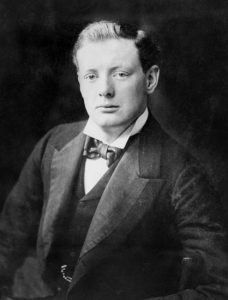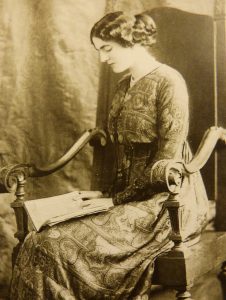
The two almost did not meet. The couple nearly didn’t marry and become one of the most famous couples in 20th century Britain. But thanks to the intervention of Winston Churchill’s cousin, the 9th Duke of Marlborough, a visitor to Churchill’s family home – Blenheim Palace in England – Clementine Hozier did meet Winston in August 1908. They took a walk in the garden, dashed for cover during a rain shower and he finally proposed.
“I took two important decisions (at Blenheim),” the great wartime leader of Britain wrote later, “to be born and to marry.”

Momentous decisions (both real and tongue-in-cheek) appear frequently in any biographical sketch of the great statesman and politician, Winston Churchill. Born in 1874, he entered military school at 19 and served in military campaigns in Cuba, India, and then as a correspondent covered the Boer War in 1899. But despite of his close association with action and military decision-making in wartime Britain, Churchill proved equally romantic.
“Je t’aime passionnement,” Clementine wrote in a note to Winston during their courtship, adding, “I feel less shy in French.”
Winston offered equally rapturous missives and they were married a couple of years before The Great War. But the amorous side of Britain’s most celebrated wartime decision-maker was not the only example of love in war I came across during my travels in Britain this week. Among my fellow-travellers, I also met Clare Short from Ontario. In recent years, the long-time volunteer with the Canadian Warplane Heritage Museum in Hamilton, has recorded the memoirs of aviation vets. He shared with me the story of one Kaye Fleming.
“I am an imposter,” she told interviewer Short. “I’m not a veteran. I have no medals.”
During the Second World War, while completing a nursing certificate at a Hamilton-area hospital, Kaye Fleming met a young New Zealand pilot trainee named Theo Hewland at a dance. Before he was shipped overseas on combat operations over Europe, the couple was engaged to be married. But Hewland was killed in a training accident in 1942. Interviewer Clare Short went on to explain that despite the setback, Kaye eventually married someone else, raised a family, but then prematurely became widowed.
“Sometime after her husband’s death,” Short wrote, “Kaye’s thoughts turned to her first love. … She wrote to Theo Hewland’s sister and in time received a reply with a picture of Theo’s grave (in England).”
Short recounts that Kaye’s repeated attempts to find Theo’s wartime roommate with RAF No. 136 Squadron at Kirkton-in-Lindsey paid off and even though she wasn’t officially a wartime widow, Kaye was invited to attend the 60th reunion of Hewland’s squadron in 2001. As part of the ceremony, she laid a wreath at her one-time fiancé’s grave; she then returned to the tombstone a year later.
Clare Short wrote that in the quiet of the Parish of St. Andrew cemetery Kaye Fleming dug a small hole in front of the tombstone with her nail file, took a lock of her hair, and placed it in the hole, “so that part of me would always be with him.”